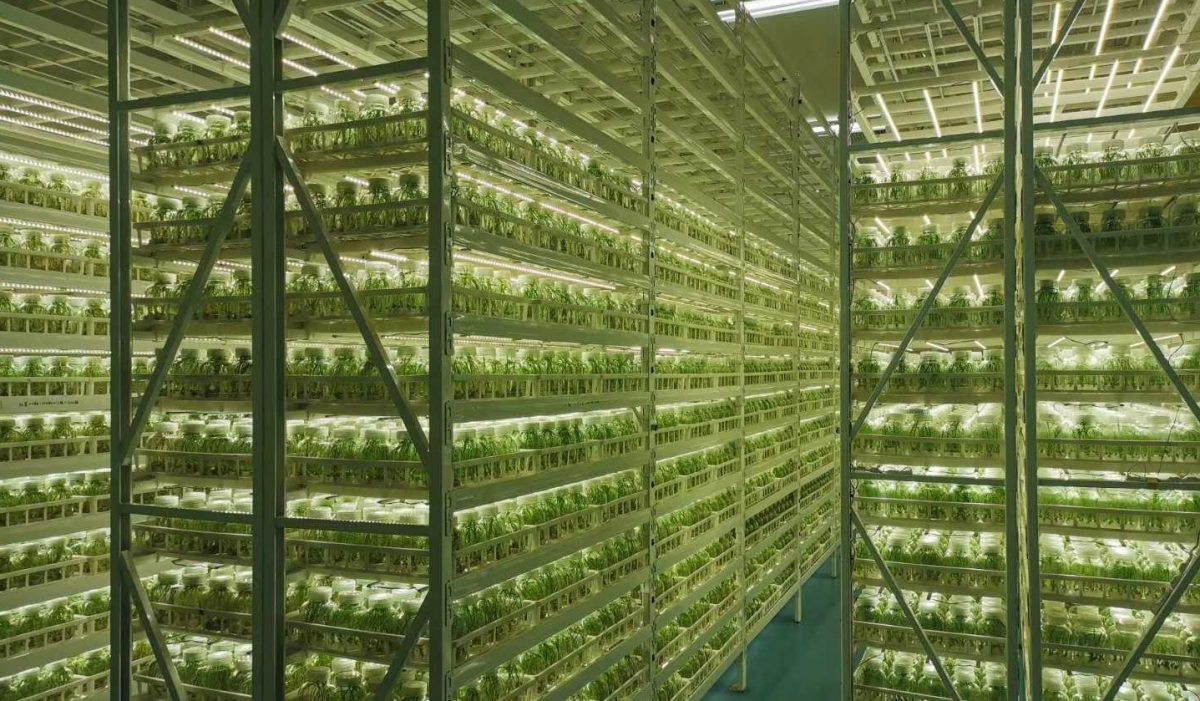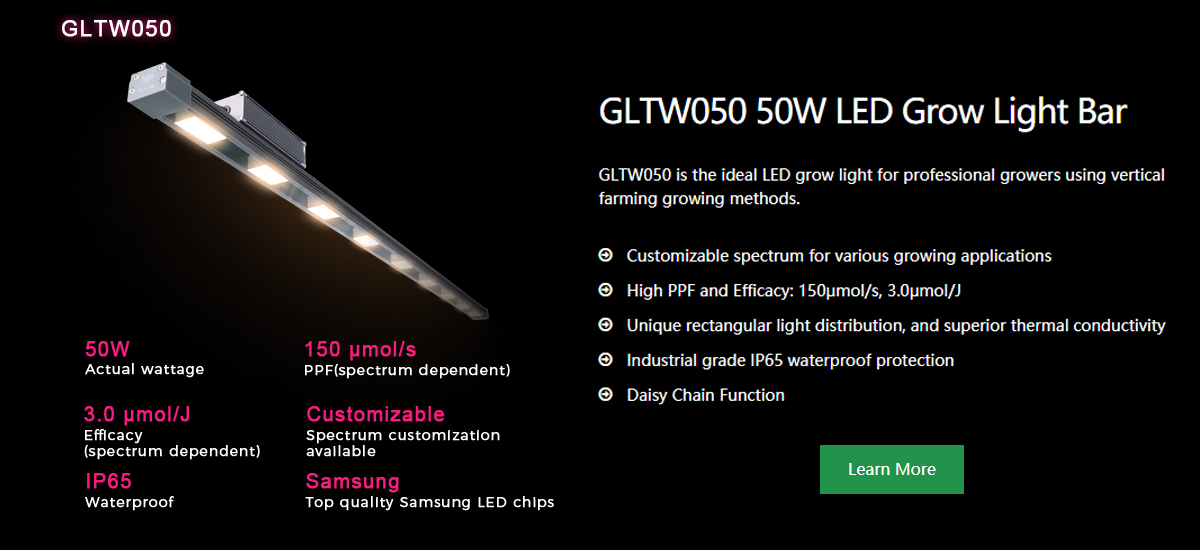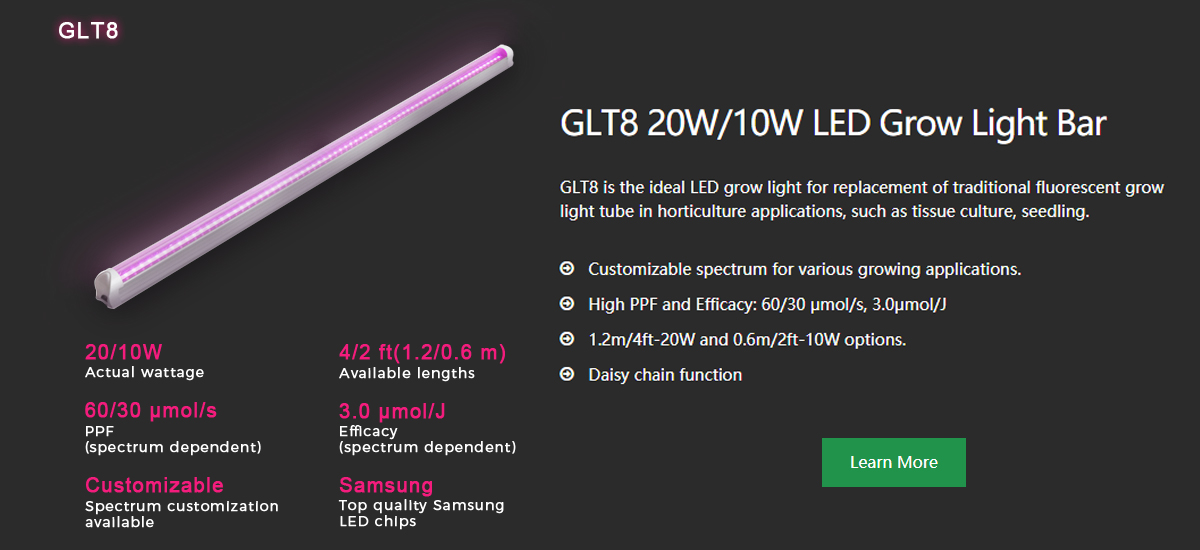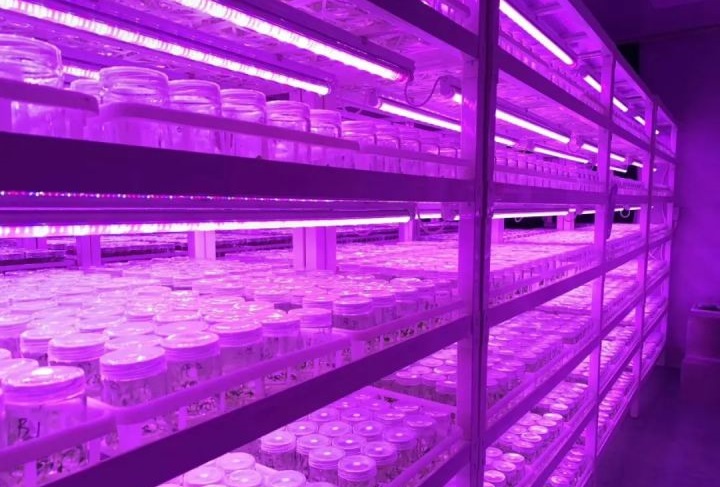


Plant cloning technology has a history of nearly a hundred years, and research on realizing the industrial production of important economic plants through cloning technology is in the ascendant. As an important environmental factor during plant growth and development, light is also one of the main energy sources for plant growth. The use of artificial light sources in the plant cloning room to directly supplement light to plants is an effective way to promote plant growth, and the theoretical basis for efficient and energy-saving supplementary light to plants is mainly the selective absorption of light by plants. In recent years, people have been trying to simulate the absorption spectrum of plants in order to develop a light source whose emission spectrum is as close as possible to the absorption spectrum of plants to generate resonance absorption and promote efficient photosynthesis.
The improvement of artificial light sources for plant cloning mainly focuses on the development of artificial light sources with lower heat dissipation and higher efficiency to reduce costs and meet the needs of plant growth. For a long time, the artificial light sources used in plant cloning are mainly incandescent lamps, fluorescent lamps, sodium lamps, high-pressure mercury lamps, etc., but the emission spectra of these artificial light sources cannot well meet the selective light demand of plant growth, and the light supplementation efficiency is low. , The lamp life and luminous efficiency are not ideal, the lamp heating needs a lot of electricity, so the overall power consumption cost is quite high, the energy consumption cost accounts for 50% to 60% of the total operating cost. Compared with the traditional artificial light source, Specially designed LED lights for developing plant clones have the characteristics of adjustable light intensity and spectrum, low cooling load, high electro-optical conversion efficiency, small size, long life, use of direct current, can set specific wavelength, fixed wavelength, etc., and has good environmental performance. It is a very suitable artificial light source for plant cloning.
Plant clone LED Lights combining red and blue high-brightness chips create artificial light sources that can adjust the amount of light, spectrum, light frequency and working ratio, and need to provide continuous flicker-free light or high-frequency flicker light. Preliminary studies using LED light sources in plant clones have confirmed that using LED light sources as artificial light sources in plant cloning greenhouses can effectively improve the growth and quality of plant clones.
As LED technology progresses and costs decrease year by year, its research in various fields has gradually begun. Compared with traditional light sources, LED lights show unparalleled advantages in the application of artificial light sources in plant cloning in terms of luminous efficiency, light utilization and spectral control.
The main advantages of LED lights in developing plant clones mainly include the following aspects:
1.High luminous efficiency
The fluorescent lamp is a low-pressure mercury fluorescent lamp, which is a typical hot cathode arc discharge type low-pressure mercury lamp. The theoretical value of the luminous efficiency of fluorescent lamps is 20.15%, which is more than twice that of incandescent lamps. The high-pressure sodium lamp uses high-pressure sodium vapor to discharge, and most of the radiant energy is concentrated on the resonance line during discharge, namely 589.0nm and 589.6nm. Choosing appropriate discharge conditions can achieve high resonance radiation efficiency. From the relative spectral energy distribution of the high-pressure sodium lamp, it can be known that the peak emission spectrum is concentrated in the yellow light region, with little blue-violet light and more red light. The current luminous efficiency of high quality plant clone LED lights can reach about 50%.
2.High utilization rate of light cover plants
In the light radiation emitted by general incandescent lamps, less than 10% of visible light is visible, and more than 90% is infrared. Therefore, using this light source to supplement light for greenhouse crops has low efficiency and high energy waste. From the perspective of plant lighting, the combination of yellow light and red light is not reasonable, nor is it an ideal artificial light source. The high-pressure mercury lamp radiates in the ultraviolet, visible and infrared regions, and the yellow and green components of the visible light account for a considerable proportion. But this part of the light has little effect on plant lighting, so it is not an ideal artificial light source. According to research, the light absorption spectrum of different green plants is basically the same. In the visible area, it is mainly concentrated in the blue-violet region of 400-460nm and the red-orange region of 600-700nm. The LED light source combined with red and blue wavebands can realize the maximum light utilization.
3.Flexible spectrum customization

Using incandescent lamps, fluorescent lamps, sodium lamps, high-pressure mercury lamps, etc. to study the growth of organisms, it is impossible to prepare quantitative control, and it is impossible to set a combination of quantitative parameters as needed. Using LEDs of different wavelengths, through the configuration of adjustable drive control circuits, different spectrum and light color combinations can be selected according to different plant characteristics to obtain the light source required by plants, and the energy consumption and cost are lower than traditional electric light sources.
4.Long life span
The fluorescent lamp life is generally not less than 3000 hours, and the condition is that the fluorescent lamp can be ignited continuously for 3 hours every time it is started. If the lamp is only ignited for 1 hour at a time, the life of the lamp will be shortened to less than 70%. Therefore, when using fluorescent lamps, try to avoid unreasonable frequent starts. Plant clone LED lightss are extremely stable, not easy to damage, and reduce the cost of purchasing new products. Continuous switching operations for millions of times will not damage the light source; energy-saving lamps will be damaged after 5000 switching operations.
From the above comparison, it can be seen that LED lights show very good performance characteristics in the application of artificial light sources for plant clones growing.
Plant Clone LED Light























